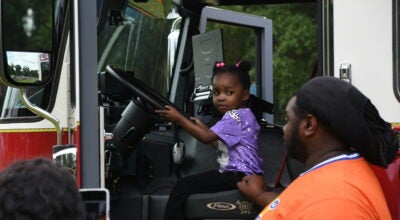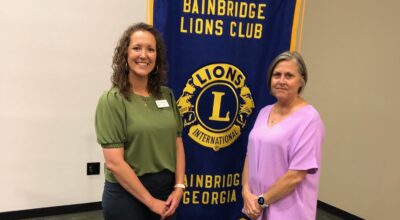National osteoporosis day, a day of awareness
Published 2:50 pm Tuesday, October 20, 2009
Osteoporosis is a disease that I feel a calling to attack full force.
Of the many diseases that affect us more commonly with age, there is no other that so often limits futures in a mere instant.
Vertebral compression fractures, VCF, are very, very common. A VCF occurs when one of the bones in the spinal column begins to collapse as the roof caves in, so to speak. As these vertebrae collapse, they push and pull on muscles, ligaments and nerves.
While some VCFs cause no pain, others cause severe suffering. Even those that do not initially cause pain are a warning sign that other vertebral fractures are likely to come along. As further VCFs occur, the back can become humped, the pain will increase, and the disability and interference with lifestyle can become profound.
VCF is the most common of the osteoporotic fractures. However, it is not the fracture with the most devastating and immediate consequences.
Hip fractures meet that ignoble definition. A hip fracture will literally lay a woman low, making her incapable of helping herself. She can trip on a rug or a dog, slip on wet tile, or just lose her balance as she turns. Once that fall occurs and that hip bone breaks, there is immediate pain and an inability to reach out for assistance. This is just one reason why an elder living alone can benefit from a monitoring system with a panic button that allows a call for help. Within that first year after a hip fracture, studies tell us that 10 to 15 percent of women die, 20 to 30 percent end up in a nursing home, 30 to 40 percent remain disabled, and only around 10 percent resume the same activity level they enjoyed before the fall. A hip fracture is a dramatic event in a woman’s life.
I share the above with you because it is all true and it should be very alerting. Women 65 and older, as well as postmenopausal women younger that 65 with risk factors, should be screened for decreased bone density with a DEXA scan. The DEXA scan is simple, easy and quick. Without disrobing, without injections and without discomfort, the DEXA machine uses low-dose X-rays to define the density of the bone in the back, the hip and the forearm; the sites most commonly fractured. It tells us the way it is, in the places where we need to know it.
Once we have determined that a patient’s bone density is low enough to take action, we have many tools to help us. I don’t know how many thousands of women have been scared off from medical treatment because of the highly publicized, but rarely encountered, Osteonecrosis of the Jaw, ONJ. ONJ is a very, very rare complication of therapy, primarily seen in cancer patients receiving higher than standard doses of medication. When taken in light of the studies that say an untreated woman with osteoporosis has a seven to eight times increased risk of fracture, the risk of ONJ is minuscule by comparison. Actually the risk of ONJ for a woman taking one of these drugs for osteoporosis is between four per 10,000 and four per 1 million users; rare indeed!
Our primary medical tool is a class of drugs called bisphosphonates. This includes Fosamax, Actonel and Boniva taken orally; and Boniva and Reclast taken intravenously. Each drug has its pluses and minuses and the choice should be left between the physician and the patient. All of these drugs have been proven to reduce the risk of fracture. The choice of which drug to pick is not nearly as important as the choice to begin therapy and reduce the risk of fracture, pain and disability. There are other drugs that have some benefit for bones as well. These include Evista, Tamoxifen and various estrogen and testosterone hormone supplements.
All of the above drugs serve in one way or another to block the body’s constant function of cyclically tearing down bone to rebuild it. Since these drugs allow the rebuilding function to continue, over time the bone grows in density and strength, thus reducing the risk of fracture. The only drug we have available that actually stimulates the deposition of new bone is Forteo. Given over the course of two years, Forteo can dramatically and safely improve bone strength for a woman’s future.
We have so many tools to help build bone and reduce suffering and disability. What we often don’t have is the opportunity to get involved and become proactive toward prevention. Many women aren’t getting their DEXAs. Many women who get their DEXAs aren’t allowing us to start the medicine out of unwarranted fears of drug side effects. Many women think “if I just take my Calcium, I’ll be OK.” The truth is that many women forget to take their calcium regularly. Studies do say that getting in your 1,200 milligrams of calcium per day will help your bones, but calcium alone will not reverse the fracture risk of osteoporosis.
Awareness of the plight of osteoporosis is important; awareness of how to effectively fight against it is imperative! All of us should be exercising regularly; weight-bearing exercise, like walking, does help. We should be getting in adequate calcium and vitamin D.
We shouldn’t smoke.
We shouldn’t consume alcohol in more than modest quantity, either. These are things we can all do! What women with osteoporosis-level low bone density need to do is to be willing to be bold and go further. I’ve seen too many women with too many fractures experiencing too much pain and too much disability. Protect yourself and your future.
Get your DEXA, if you are due. Take your calcium and Vitamin D.
Do your walking. And don’t be afraid to take the next step to therapy, a step that could keep you out of the nursing home. That is the awareness we need to have!
For more information, you may go to the Web site of the National Osteoporosis Foundation, www.nof.org.




